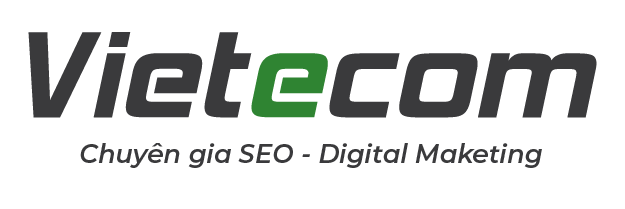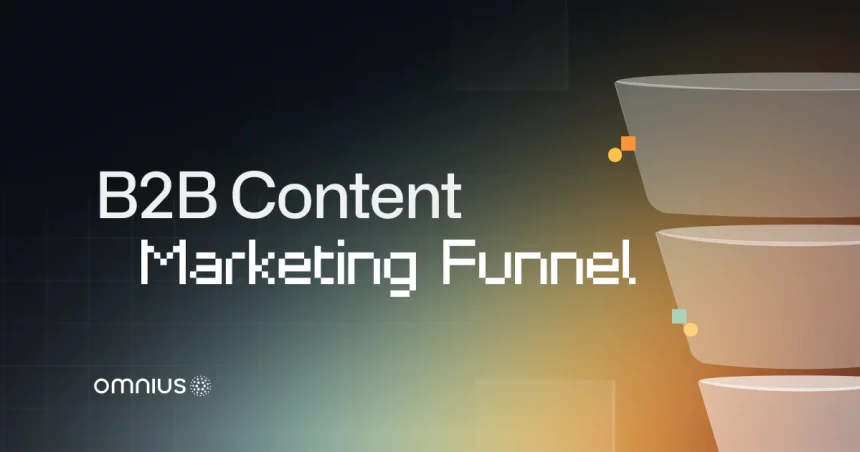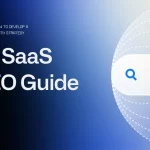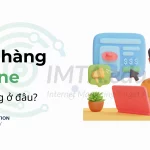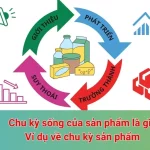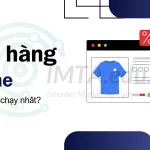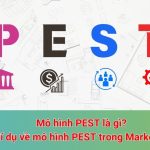Understanding the user journey is essential for generating leads, conversions, and income in the world of B2B marketing.
The B2B content marketing funnel is an effective framework that enables companies to lead prospective clients from the initial awareness-raising phase to the secure purchase decision.
It functions as a tactical road map for winning over potential users and converting them into ardent supporters!
Let’s discuss the advantages of incorporating the B2B marketing funnel into your content strategy and walk you through the process of producing content that generates leads and sales.
The Benefits of B2B Marketing Funnel?
A B2B content marketing funnel is a method that assists companies to attract, engage, and convert leads into users
When used effectively, the quickest path to your content’s optimal ROI is through an effective marketing funnel.
A business must provide content matching the ideal buyer persona to build a marketing funnel that performs.
- Establish a Framework – You must compose and stick to your funnel strategy rather than freaking out and attempting to come up with a plan at the last minute.
- Select the Correct KPIs to Measure – With the correct funnel metrics, you can monitor your progress more easily and make sure you’re always heading in the right way.
- Accelerate the Sales Process – B2B transactions are prolonged by multiple factors, but you can maintain momentum in the process with the support of a strong marketing funnel.
How is the B2B Content Marketing Funnel Structured?
A marketing funnel is a tool used to guide potential users through the various stages of:
- ToFu, or top of the funnel – Realization They Have an Issue.
- MoFu, or middle of the funnel – Presenting Solutions to Resolve Their Issues.
- BoFu, the bottom of the funnel – Persuading Them to Become Clients.
- Retention – A post-purchasing stage.
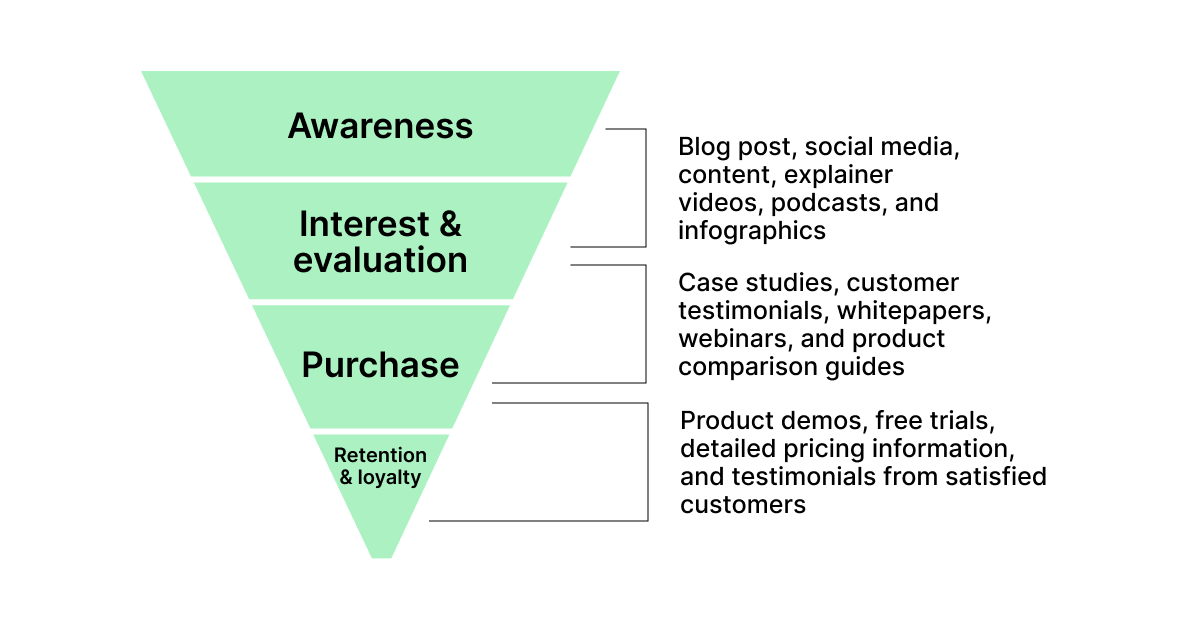
1. ToFu – Awareness Stage
In the awareness stage of the content marketing funnel, your target audience is actively seeking answers and is just starting to realize they have a problem.
This is the location of the broadest types of keywords, which usually have the biggest volume of terms.
Right now, one of the finest ways to attract new clients to your sales funnel is through SEO.
Here are some general ideas on how to manage the ToFu stage:
- Learn From Your Audience – You should use Smart Content to customize each landing page for your leads according to various parameters, such as persona, country, language, stage of the lifecycle, and more.
- Address Your Sales Team – Choose the social media channels that your buyer personas are most likely to utilize, and structure your content using hashtags or communities.
- Research Social Media Platforms – You need deeper insights into what your clients are interested in.
- Organize Surveys and Interviews – Gather feedback, opinions, preferences, needs, and goals from your existing or potential users.
Once you are familiar with the basics, you need to focus on target personas for a better shape of the user’s journey.
1.1 What Use Does Knowledge of Personas Provide?
Target personas are tailored descriptions of your ideal client that you may use to create a more focused B2B content marketing campaign.
These personas facilitate the establishment of elements like the tone of voice and the mapping of particular articles that need to be written to solve the problems faced by your audience.
For instance, a buyer persona’s content will vary depending on the type of business and role.
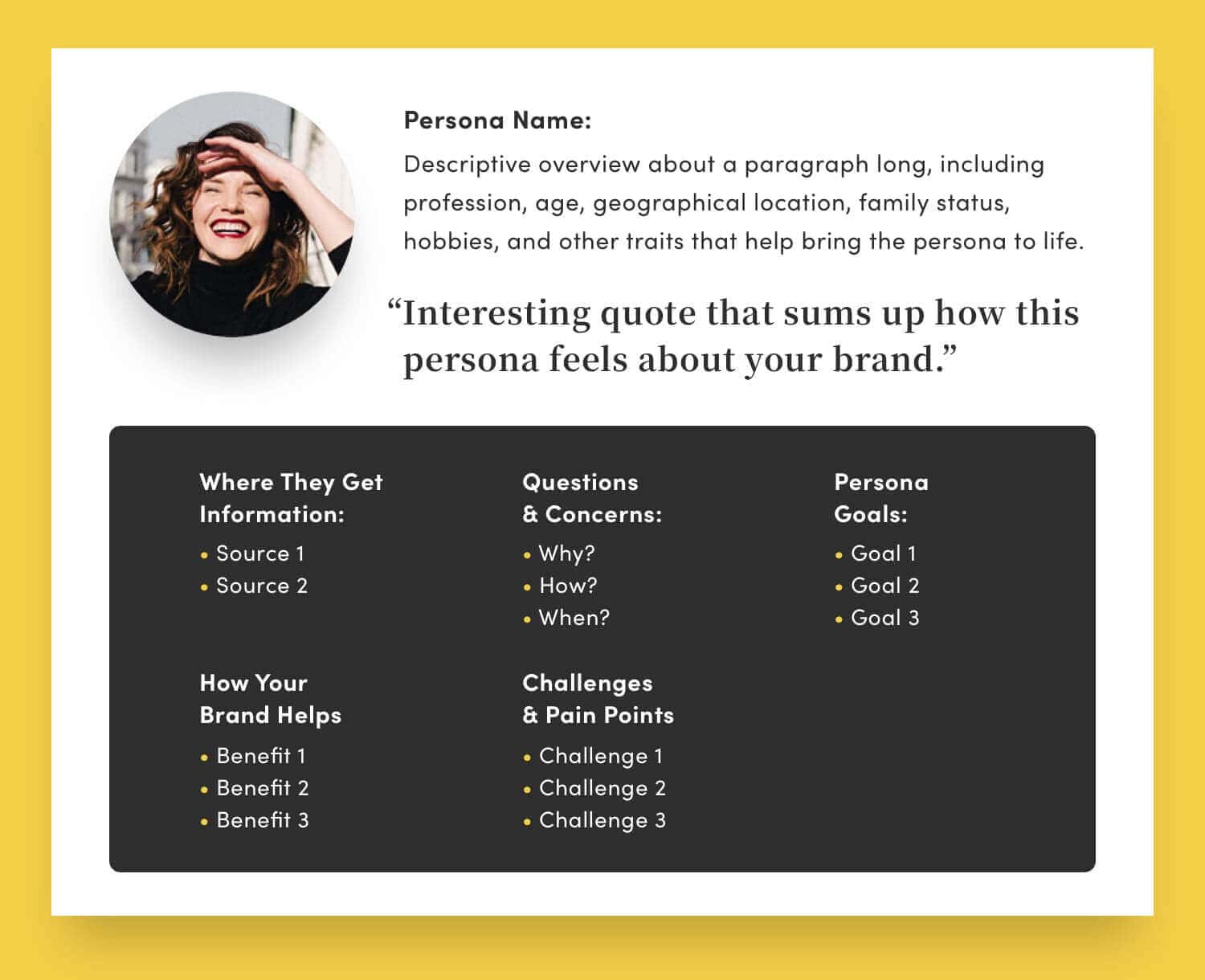
Well-developed buyer personas have already resulted in revenue improvements for 44% of B2B marketers.
The following are some of the most typical elements that B2B businesses incorporate in personas:
- Demographic Information – Things like age, gender, race, and income bracket.
- Psychographic Information – Such as obstacles, pain points, objectives, and motivations.
- Educational Background – Helps you determine the complexity level of your content.
- Social Media Usage – You determine habits and motivations about your groups of interest through social media content.
Concentrate on things that will help you produce material that will influence their choice more easily.
You may need to create two or three personas for each of the different industries you serve and the various roles you usually target, so be careful not to create too many.
1.2 The Awareness Stage’s Objective
Creating content that draws leads and motivates them to become potential customers is the ultimate objective of the awareness stage.
The purpose of producing this content is to expose your company and its goods or services to people who may not yet be aware of your offerings but who need or want what you have to offer.
ToFu Tactics
The following are the most effective tactics for connecting with prospects at the TOFu:
- Digital PR – It is a positive branding process of online interaction with communities, producing interesting content, and utilizing various digital media platforms to raise awareness.
- Search Engine Optimization or SEO – Boosts your website’s online visibility through link building, keyword targeting, and technical website improvements.
- Paid Social Media and Influencer Marketing – Use social media sites and the people who use them to promote your business and increase interaction.
ToFu Content Formats
The goal of ToFu content is to provide insightful information:
- Infographics – These are visual representations of complex data meant to draw in viewers and raise awareness of brands.
- Blog Posts – Educational, SEO posts that build brand credibility and attract new readers.
- E-books – Comprehensive articles with insightful advice traded for contact details to generate leads.
- Podcasts and webinars – Using audio and video content to demonstrate knowledge, foster trust, and produce leads.
- Videos – Brief, engrossing content that increases interest, builds emotional connection, and broadens brand awareness
Here’s an example:
Assume you are a gym owner. You want new members. But the purpose of your blogs shouldn’t be to entice people to subscribe. They should be customized to offer pertinent, beneficial content like:
- The Health Advantages of Frequent Exercise
- How Protein Aids in Muscle Growth: Plant-Based Whole Food Recipes Packed with Protein
- Which Foods Are Ideal For Fueling Your Exercise?
- How Can I Treat Muscle Soreness That Develops Later?
- The Connection Between Muscle Recovery and Sleep
One of your blogs appears on the user prospect’s search engine results page (SERP) when he/she searches Google.
The more often you appear on search engine results pages, the more authority you gain on a particular topic.
People also begin to trust you when you establish yourself as an authority in a certain field.
ToFu Content Metrics
ToFu metrics to measure:
- Website Traffic – It assists you in determining the scope of your marketing campaigns the efficiency with which you bring visitors to your website and which channels generate the most traffic.
- Page Views – It assists you in determining which of your website’s pages are most interesting to visitors and which ones need improved user experience.
- Bounce Rate – A high bounce rate may be a sign that users are not having enough experience on your website or that potential consumers are not getting what they’re looking for.
- Click-through Rate – This measure gives you an idea of how successfully your messaging reaches prospective clients and how well you bring in traffic to your website.
- Leads Generated – This assists you in determining the success of your lead generation campaigns and the degree to which you are drawing in and retaining prospective clients.
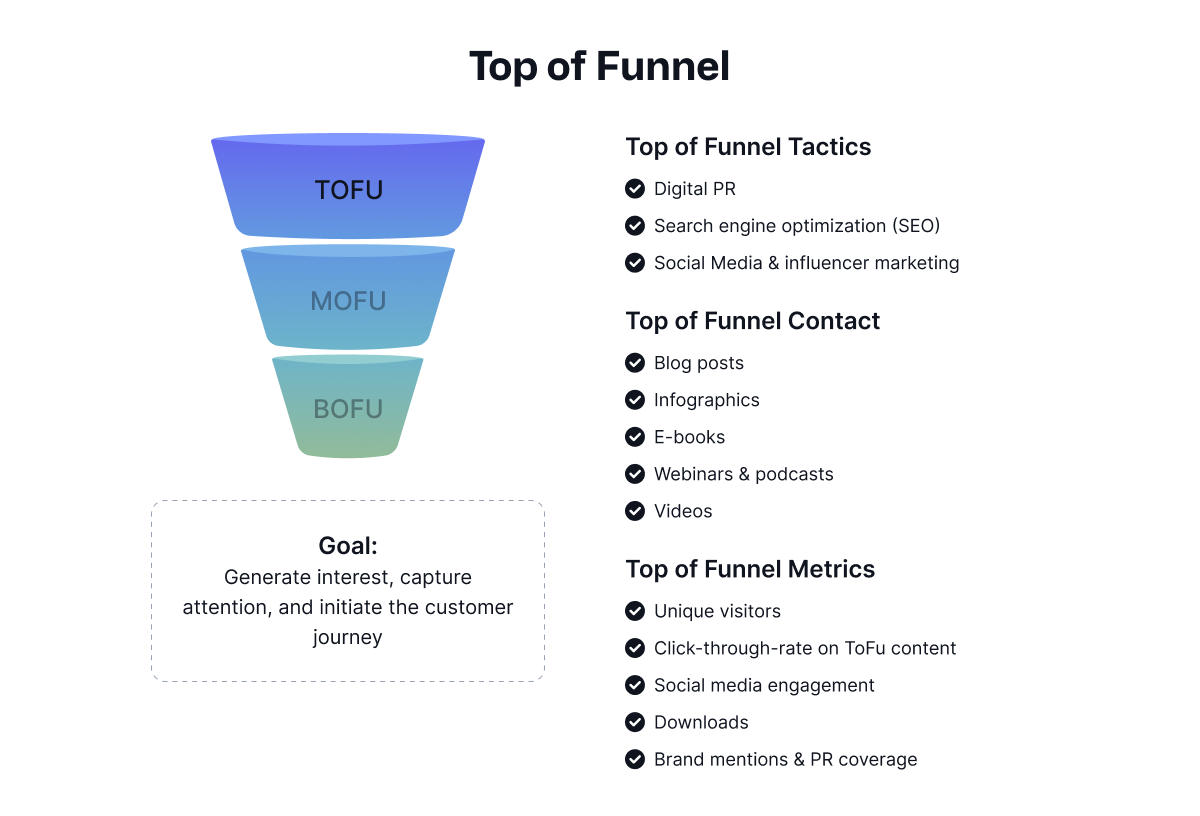
2. MoFu – Consideration Stage
In the consideration stage, a B2B brand must produce valuable content that addresses increasingly complex subjects.
This is a crucial phase since it will decide whether the buyer proceeds to the next round of decision-making about the purchase or withdraws.
White papers and case studies are standard educational materials in this phase.
During this stage, social networking, excellent content, and inbound marketing techniques are all quite efficient at driving traffic to your website.
2.1 The Consideration Stage’s Objectives
Providing prospective clients with all the information they require to overcome their barriers to completing a purchase is your primary objective during the contemplation stage.
When developing the most effective marketing tactics for the consideration stage, keep the following factors in mind:
- Build Trust With Your Target Audience – Producing content that positions your brand as reliable will aid in converting leads into paying clients.
- Plan Your Content Around The Solutions – You should present the advantages of your service without distorting the truth.
- Be mindful of what the Next Step is – Because of branching into the next step, you should design the next piece of content that will transcend into the purchase phase.
- Browse 3rd Party Sites – Get ideas about what users like and dislike about your items or those of your competitors to counter with topics in your content.
- Incorporate SEO – Your content will rank higher in search engines and reach out to more clients.
- Track Website Activity – Your company should always be aware of the information and lead scores of potential users.
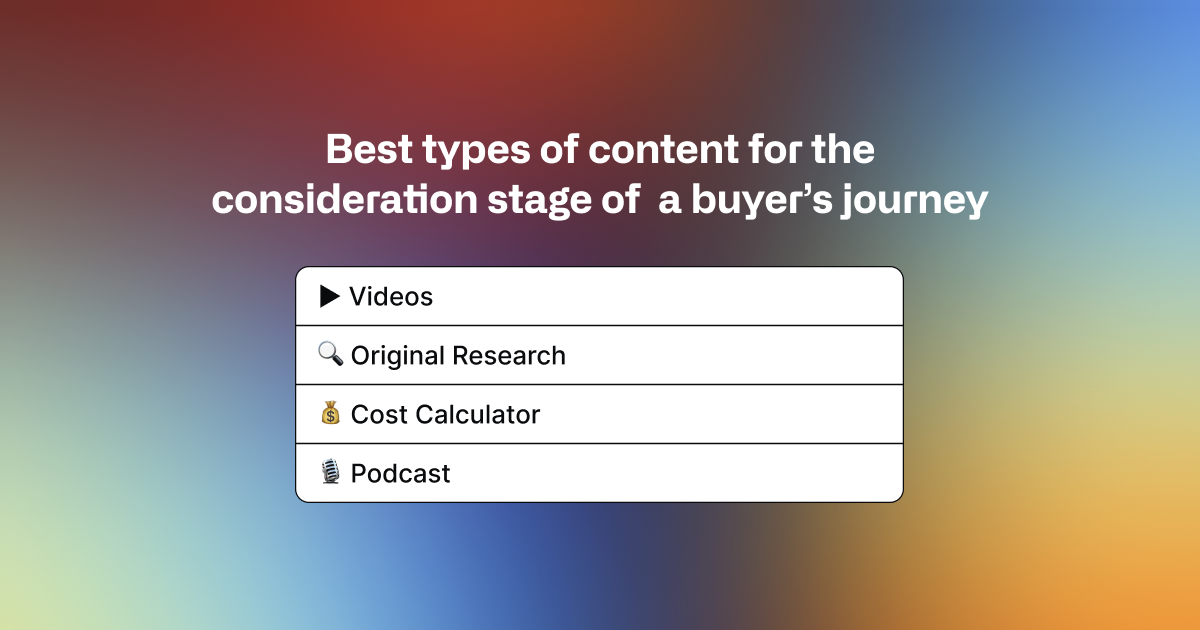
Material that addresses the demands of your target audience helps to guide buyers down a stream that showcases your product or service.
This content can be distributed via channels, such as:
- Videos – Videos have higher conversion rates and engagement and provide a buyer with a story in a manner that articles and blog posts cannot.
- Cost Calculators – Create a cost calculator that potential users could use to compare the prices and determine how much they would save by selecting your service or product.
- Original Research and Reports – Original research brings new information that captivates the marketing audience and allows your brand to be more recognizable.
- Podcasts and Webinars – Podcasts are like radio shows and webinars are online classes or events that provide visual and audio engagement.
MoFu metrics to measure:
Lead Engagement – You can nurture leads and customize your messaging by monitoring lead engagement indicators like email open rates, click-through rates, and time spent on the website.
Lead Quality – Lead quality and conversion rate prioritization can be achieved by utilizing metrics such as job title, company size, and lead source.
Conversion Rate – By monitoring this measure in the middle of the funnel, you may spot potential areas for improvement in your lead nurturing efforts and make data-driven choices.
Length of Sales Cycle – This indicator can also assist you in better resource planning and revenue projections.
Pipeline Velocity – The rate at which leads pass through the funnel is measured by this parameter and you can make data-driven decisions by keeping an eye on this measure.
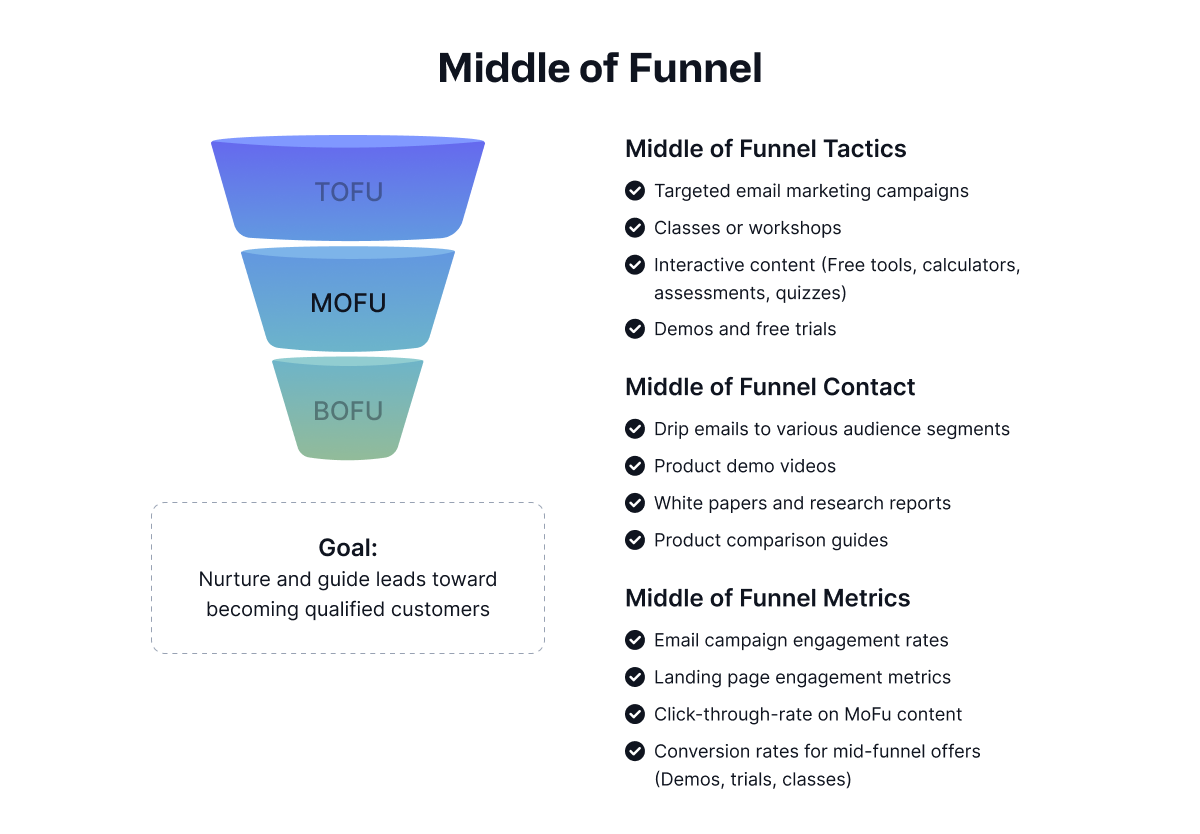
No matter what kind of content you create, MoFu content should try to inform and educate the audience about the brand products and services offered by the company.
Along with adding value, it should also build credibility.
This is also where industry-leading companies’ logos and endorsements magically appear on your landing pages.
From here, we move on to the next funnel stage.
3. BoFu – Decision Stage
The decision stage is when the client selects whether or not to buy the product or service.
By concentrating on BoFu, marketing activities can better identify and nurture quality prospects, optimize conversion rates, and raise return on investment (ROI).
Since a small percentage of your prospects advance to this point, it’s also a delicate stage. However, the people who do are typically your best organic users.
You want to ensure that the new user has a smooth experience while they discover the main functions, explore their options, and appreciate the product.
3.1 The Decision Stage’s Objectives
Businesses can use various tactics to convert leads at the bottom of the funnel:
- Make Targeted Content – Building trust and credibility can be facilitated by producing information tailored to user needs and problems.
- Generate Social Proof – Case studies, user reviews, and testimonials may all support the value proposition and motivate leads to take action.
- Provide Rewards – Offering time-limited deals, free trials, or discounts might encourage leads to act and complete a purchase.
- Make the Unique Experience – user support, messaging, and tailored offers can strengthen relationships with leads and boost conversion rates.
- Put Retargeting Into Practice – Retargeting techniques can raise brand recognition and assist in connecting with leads who have previously visited the website but have not yet completed a transaction.
Content that converts exceptionally well at this step of the funnel includes:
- Buyer Guides and FAQ Pages – This offers comprehensive resources that address last-minute questions and offer insightful data to influence purchase decisions.
- Discount Codes & Coupons – Incentives such as pop-ups, emails, or texts with discounted pricing are used to encourage instant purchases.
- Customer Service and Demo Request Forms – This is where potential users may go to get help and set up product demonstrations, which increases interaction and sales.
- Use Cases – Showcasing captivating narratives that vividly illustrate your product or service has been used to overcome obstacles and produce exceptional results.
- Comparison Guides for Competitors – Information highlighting the benefits of a product that helps potential users decide between brands and complete their purchase.
BoFu metrics to measure:
- Revenue from Sales – Monitoring this indicator can assist you in determining which sales and marketing strategies are most successful in generating income.
- Conversion Rate – By monitoring this measure, you can make data-driven decisions to optimize your strategy and pinpoint weak sales areas that need work.
- Average Order Value – Monitoring this indicator can assist you in gaining insight into users’ purchase patterns and spotting business prospects.
- Customer Lifetime Value – You can find ways to increase user retention and gain insight into the long-term worth of your clients by monitoring this measure.
- Win/Loss Ratio – By monitoring this indicator, you can gain insight into the performance of your sales force and pinpoint areas in which process or sales need upgrades.
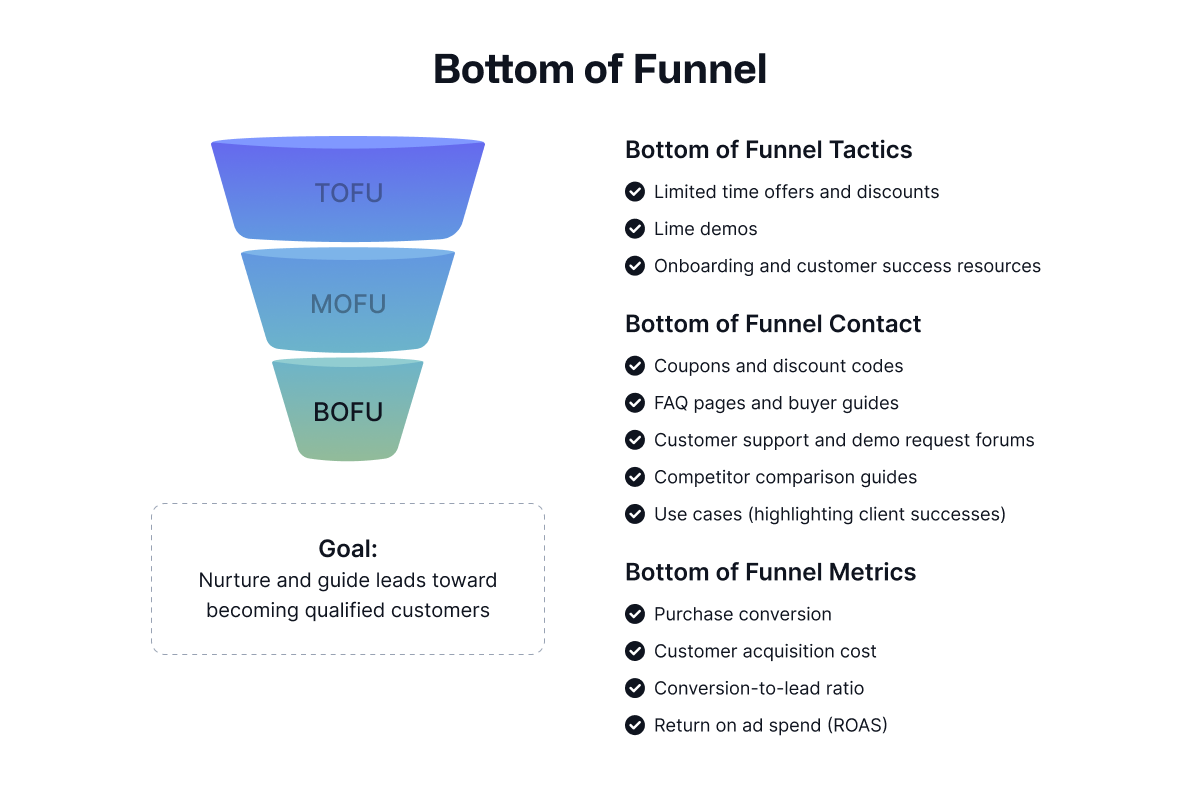
It’s important to keep in mind that potential clients may leave at this point if there is even the smallest amount of friction.
Make sure everything is clear and consistent so that the user can complete the transaction without any obstacles.
4. Retention – The Post-Purchase Stage
A corporation strives to establish lasting client ties during the retention phase, which comes after the purchase.
In B2B transactions, this technology is far more valuable than in B2C client interactions.
A seller needs excellent retention rates because B2B clients typically have longer buyer journeys and higher lifetime values.
The most popular way to communicate with paying users is via email.
A B2B company will typically attempt to contact users directly because there is always a working relationship between the two parties.
You might also think about communicating via social media and phone calls.
How to Act if Something Goes Wrong During the Funnel Cycle?
Are your visitors still getting stuck in the funnel?
No matter at what stage you are losing your customers, consider hiring a team of professionals to help you move from the standstill.
An SEO agency can take measures to boost your business visibility and help you turn those visitors into customers.
Whether you need deep market research, content marketing strategy, or content writing with design and SEO, Omnius got you covered.
Book a 30-minute free consultation to learn how to implement SEO tactics to optimize your website and grow your traffic while generating qualified leads!
FAQ
A Marketing Funnel versus a Sales Funnel: What’s the Difference?
In a nutshell, the primary distinction between the two is based on the final destination of each funnel.
Your objective with the marketing funnel is to reach as many people as possible and introduce them to your company.
Converting prospects into users is the aim of your sales funnel.
What Is an Example of a Marketing Funnel?
Awareness – Through marketing channels, including social media, advertising, and word-of-mouth recommendations, a potential user learns about your brand, product, or service.
Interest – A client expresses interest in your good or service and starts looking into it further.
Consideration – The prospective client weighs the features, benefits, and costs of your offering while comparing it to those of competitors.
Intent – The prospective client chooses to buy your product or service and moves forward with the transaction by a salesperson or seeking a quote, for example.
Purchase: The choice to buy your product or service is ultimately made by the prospective client.
Retention – The client stays with your business and becomes a repeat user, opening up new prospects for upselling and cross-selling.
Which Approach Results in the Most Conversion-Friendly Content?
Knowing your target audience’s motives and pain areas is crucial to producing content that converts.
Create an effective user profile and modify your material to suit their requirements.
Make content appropriate for each step of the B2B content marketing funnel by using it as a reference.
To help users go through the funnel and encourage them to do the required action, use calls to action and internal connections.
Nguồn: omnius.so
